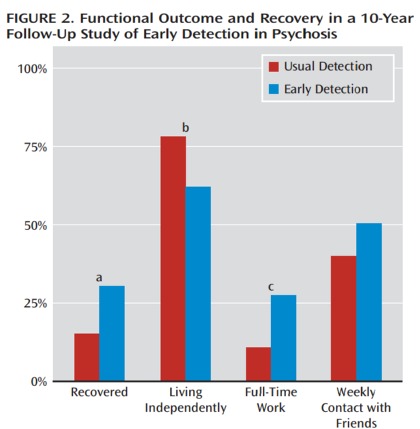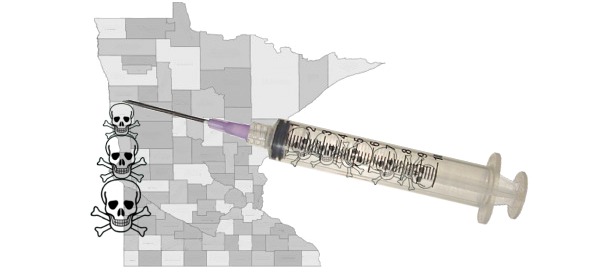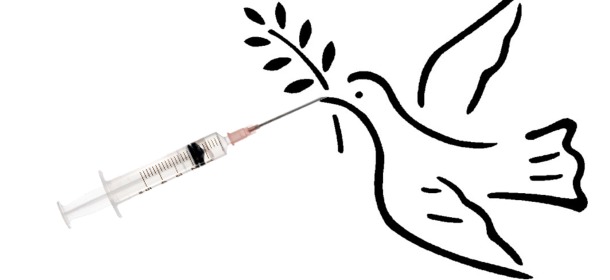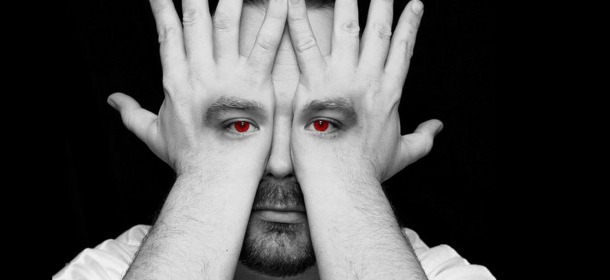Featured
Psychiatry Is Garbage Science: Study Demonstrates Fraudulence of Claims
Psychiatric science isn’t just junk science, it’s outright garbage! This study, which is being ballyhooed for showing that early diagnosis and intervention results in better outcomes, is so bad that it should be an embarrassment to them. Instead, it’s treated like the final proof for their fraudulent claims.
by Heidi Stevenson
Graphic by Steve D. Hammond
A long term study on the effects of early schizophrenia diagnosis and intervention with standard pharmaceutical treatment is being hailed from the ramparts of psychiatry. At ten years, the study claims that early diagnosis and treatment is showing better results. You can be sure they’ll be used to pressure ever more people into the psychiatric mill for processing.
However, even a quick review of the study shows that it’s so bad that calling it junk science would be inadequate. It’s garbage science, clearly designed to produce a result favorable to the standard treatment used by psychiatry. It is an insult to the people who have been devastated by diagnoses of schizophrenia and the destructive pharmaceutical drugs that further degrade and destroy their lives.
Garbage In Garbage Out
We all know that putting garbage into something, then we can only get garbage out. Garbage In Garbage Out, GIGO, is alive and well in this study. Apparently, the authors of a Norwegian study called Early Treatment and Intervention in Psychosis Study (TIPS), figured they could get away with comparing different ending points for the two groups studied, and that they could simply ignore the dropouts from the study, as if they don’t really count.
A report on the 10-year results of TIPS, Long-Term Follow-Up of the TIPS Early Detection in Psychosis Study: Effects on 10-Year Outcome, published in the American Journal of Psychiatry, reported:
… the early-detection area had significantly higher rates of recovery in spite of the selective loss of patients with lower symptom levels.
They go on to congratulate psychiatry:
The greater participation of early-detection patients may have been related to the early-detection program with its focus over many years on recognizing psychotic illnesses coupled with easier access to care. Such attention and persistence may have engendered greater rapport with patients and their families
 Let’s first take a look at the dropout rate. The flowchart on the left provides the number of subjects who started in the boxes at the top. It then shows how many of them were lost to follow-up either because of death or because they simply didn’t continue.
Let’s first take a look at the dropout rate. The flowchart on the left provides the number of subjects who started in the boxes at the top. It then shows how many of them were lost to follow-up either because of death or because they simply didn’t continue.
Notice that the early detection group lost 40 of the 141 subjects, about 28%. The usual-detection group lost 67 of the 140 subjects, about 48% of the number who started. The reasons for leaving were not given. The authors, of course, seem inclined to believe that it’s because they weren’t as well-treated. They offered several possible reasons for the difference in attrition between the two groups, none with supporting data, and finally acknowledge:
The model could not, however, fully account for the nonrandomness of the study sample attrition.
Never do they consider the single most obvious potential reason for the distinction in dropout rates. This reason, though, cannot be mentioned in the study, because doing so would point a finger directly at the single factor that nullifies every aspect of it.
The average age of the early detection group was 26.3 years. The average age of the usual detection group was 31.2 years. The usual detection group was nearly 5 years older. The study does not guesstimate how long the usual detection group had lived with schizophrenia symptoms. Five years longer? The age difference between the two groups would indicate that.
To compare treatment results requires comparing equivalent groups: people who have lived with the condition for the same length of time. Instead, this study is making comparisons from the dates of diagnosis.
 The usual detection group has apparently been living with schizophrenia for five years longer than the early detection group. Thus, the 10-year point should be called the 15-year point for the usual detection group. On this point alone, the study is meaningless.
The usual detection group has apparently been living with schizophrenia for five years longer than the early detection group. Thus, the 10-year point should be called the 15-year point for the usual detection group. On this point alone, the study is meaningless.
The other salient point is the number lost to follow-up. No information exists for how they’re doing or reasons for death.
The graph on the right is how the authors provided the overall results. In the text, they stated the following figures related to the graph:
- Full-Time Work
Usual detection: 11.0%
Early detection: 27.7% - Living Independently
Usual detection: 78%
Early detection: 62% - Recovered
Usual detection: 15.1%
Early detection: 30.7% - Weekly Contact with Friends*
Usual detection: 40%*
Early detection: 50%*
*Note: The authors do not provide the actual figures for Weekly Contact with Friends, but state that the difference between the two groups is not significant. The figures given are, therefore, estimated from the graph.
The results are, at best, equivocal and questionable. How do they explain that employment rates are greater in those who were detected earlier, while the ability to live on their own is greater in the usual detection group? That conflict should surely be resolved before claims of benefits from early detection.
That’s bad enough, but now let’s look at the percentages of subjects who were lost to follow-up:
- Lost to Follow-up
Usual detection: 48%
Early detection: 28%
The number lost to follow-up is greater in both groups than the difference between the results in any of the reported categories!
Nonetheless, the authors concluded:
Early detection of first-episode psychosis appears to increase the chances of milder deficits and superior functioning. The mechanism s by which this strategy improves the long-term prognosis of psychosis remain speculative. Nevertheless, our findings over 10 years may indicate that a prognostic link exists between the timing of intervention and
outcome that deserves additional study.
In spite of the fact that the study cannot possibly have demonstrated anything of value, the authors not only report that it appears to document that early detection and treatment seems to result in better outcomes, they go on to suggest that they have finalized the point, that it’s now time to go ahead and find out why this non-existent fact exists on their nonexistent planet!
Psychiatry, a Fraudulent Field
Even with a study so deeply distorted, the results were, at best, ambivalent. Nonetheless, the authors appear to declare victory for the psychiatric model of early schizophrenia detection. And the psychiatric press has been promoting this claim as a result. Of course, they’ve been doing so and consolidating their efforts with government agencies to make early detection happen for years, in spite of the utter lack of documentation demonstrating any benefit.
What more does anyone need to understand that psychiatry is a phony field? It labels people with invented diagnoses and invents and promotes nonexistent causes for these diagnoses. It pushes and even forces its horrifically damaging and life-destroying pharmaceutical chemicals, electric shocks, and surgeries on people who’ve received these arbitrary diagnoses. And its practitioners expect to be regarded with respect!
Just exactly who is insane?
P.S. There are a few fine psychiatrists out there who practice for the benefit of their patients. Dr. Peter Breggin, in particular, comes to mind. They treat patients with respect and avoid the use of any of these diabolical treatments. Apologies to them. I hope they understand that they are not included in this sweeping and well-deserved indictment.
Sources:
- Long-Term Follow-Up of the TIPS Early Detection in Psychosis Study: Effects on 10-Year Outcome
- Benefits of Early Intervention for Psychosis Persist at Ten Years
- Psychiatric Help Needed Sooner After Suspected Psychosis
- Early Intervention in Schizophrenia
Tagged conventional medicine, early intervention schizophrenia, garbage science, pharmaceuticals, pseudo-science, pseudoscience, psychiatric junk science, psychiatric science garbage, psychiatry, psychiatry fraudulent, schizophrenia early intervention, schizophrenia early intervention study, schizophrenia early treatment
















